
With the harvest from our garden, and stops at roadside stands and farmers markets, my family ends up with a lot of fruits and vegetables that we want to preserve and enjoy throughout the year, not just while they are in season. While I really enjoy canning now and again, in my case, it’s all about freezing fruits and vegetables for smoothies.
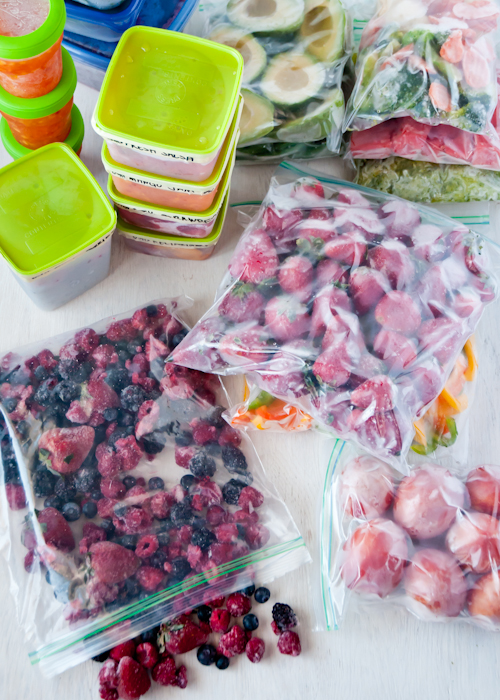
FREEZING PRODUCE FOR SMOOTHIES – A COMPLETE GUIDE
Frozen Food Is Fresher Tasting Than Canned Food
There’s a reason for that. I find that some things are quicker to preserve when freezing, like berries. And other produce is fresher tasting and the quality is a bit better when freezing instead of canning. Plus, confession: I just don’t like canned veggies all that much. So, freezing it is!
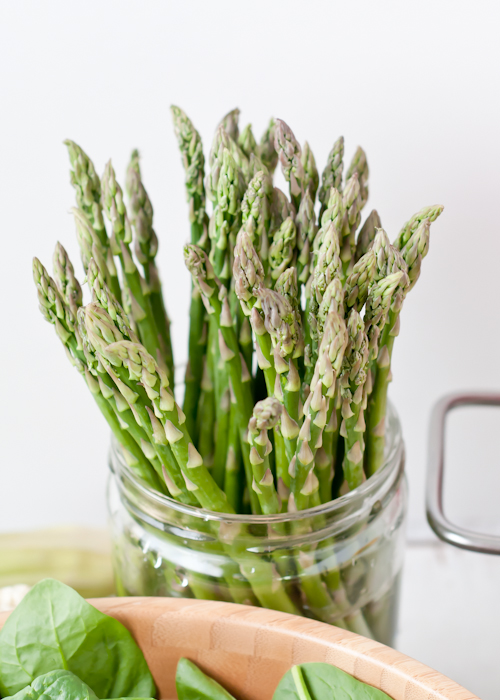
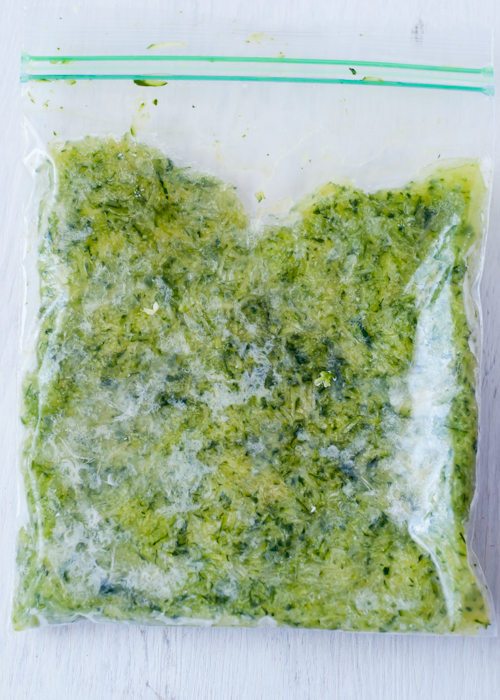
Remember last summer when we covered the basics of washing and storing produce? Consider this the companion to that post.
Freezing Produce Requires Planning & Proper Equipment
As with canning, freezing produce requires a little bit of planning and gathering the proper equipment. While canning relies on heat to kill microbes, which then also destroys some of the nutritional value, freezing delays the growth of bacteria and slows the work of enzymes, which keeps the food preserved. That’s not to say that frozen food isn’t as safe as canned food. It’s just a different way to do it.

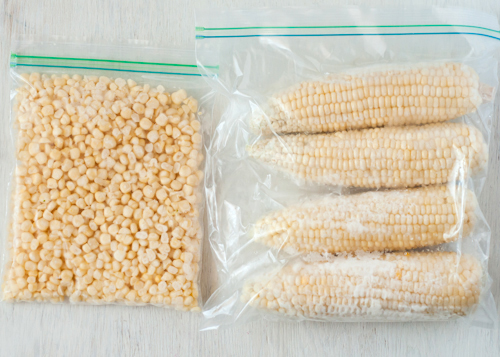
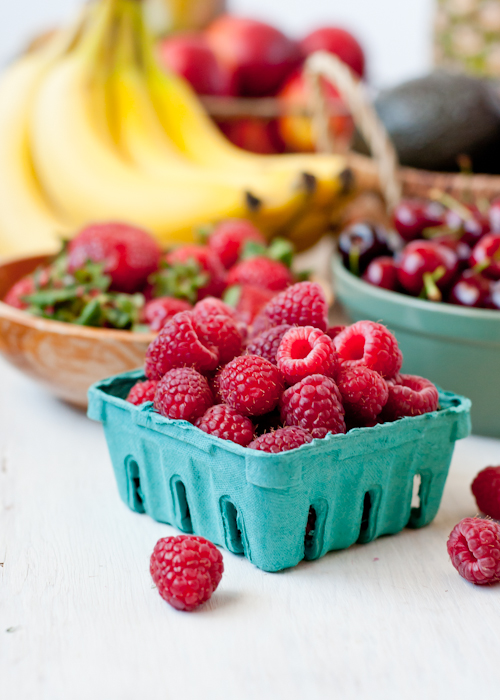
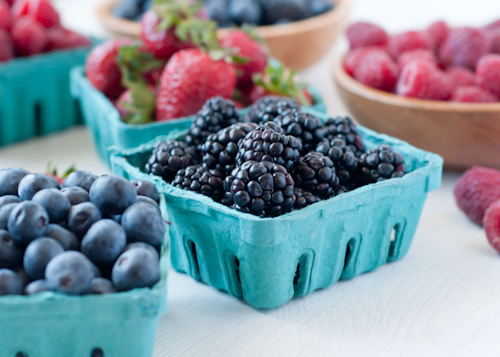
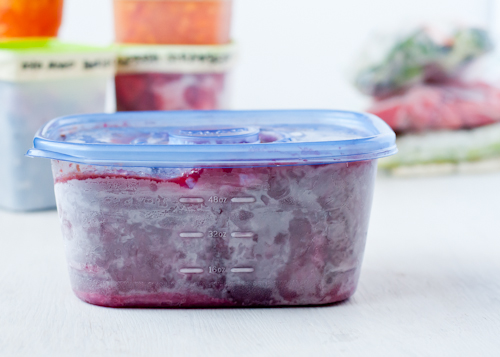
A big plus for freezing produce is that it ends up tasting much fresher and contains more nutrients than canned produce.
But there is a draw back as well. The texture of thawed veggies and fruit can be undesirable. In the process of freezing, the water within the fruits and veggies turns to ice. As it does, it expands which causes cell walls to burst. This can equal mushy texture when thawed.
But there are steps you can take to ensure higher quality frozen fruits and veggies — similar to the ones you buy at the grocery store. And we’ll cover those below.
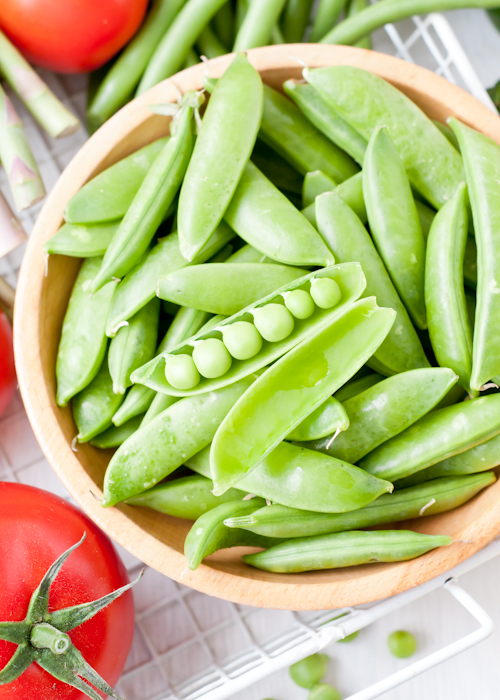
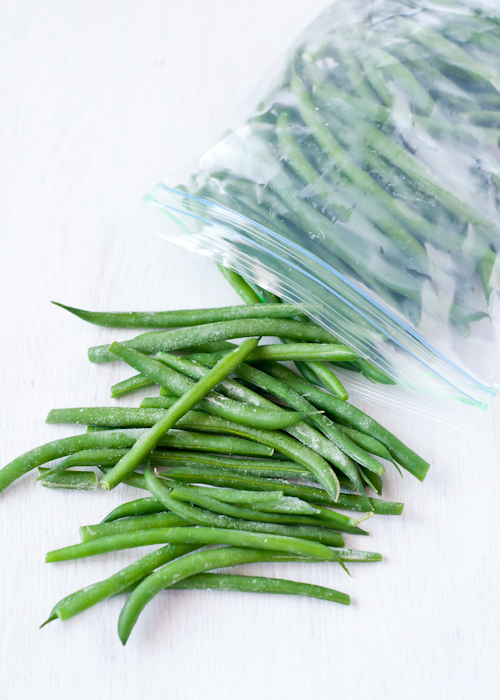
First let’s talk about the materials you’ll need to assemble before you start.
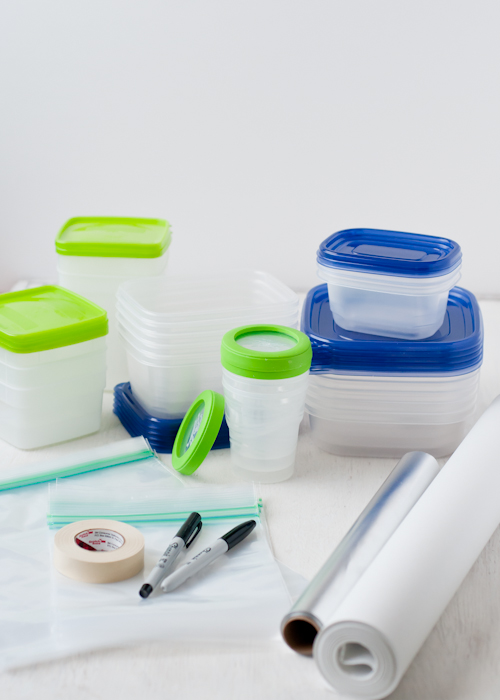
Materials for Freezing Produce
Secret #1: Something great thing about freezing fruits and vegetables is that you don’t really need fancy equipment. Freezer bags come in handy for “dry pack” freezing that doesn’t involve using syrups or purees. Rigid plastic containers, glass containers, and jars come in handy for liquid or semi-solid foods, sauces, jams, and other preserves.
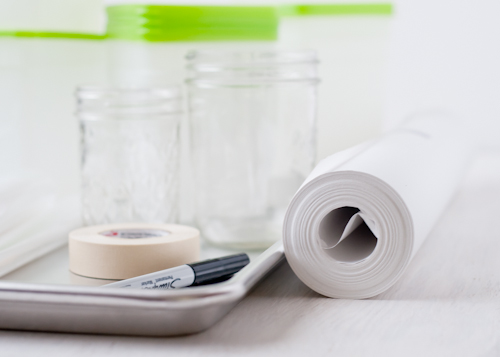
In addition to containers, I also recommend freezer paper, freezer tape, and heavy-duty foil. They come in handy for packaging certain foods and for long-term storage. Long term means longer than the typical 6-12 months. The longer you store the food in the freezer, the more the quality declines, but it is still perfectly fine to eat.
Another essential for me is a rimmed baking sheet. I use it to quickly freeze individual pieces of whole or sliced produce. More on that in a bit.
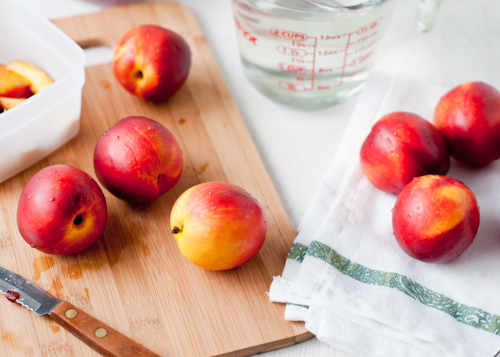
How to Prepare Fruits & Vegetables for Freezing
You’ll want to wash all fruits and vegetables well, especially if you don’t plan on peeling them, and pat them dry with a paper towel or dishtowel. Some fruits and vegetables can be frozen whole, while others need to be peeled, pitted, and/or cut into smaller pieces. A bit of it is personal preference, but some produce definitely does better in the freezer when cut into smaller pieces.
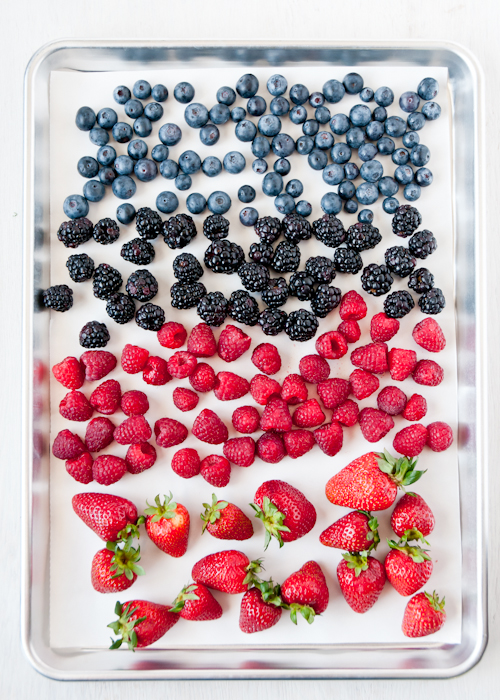
Secret #2: Fruits and veggies that do exceptionally well frozen whole:
Berries (raspberries, strawberries, blueberries, blackberries, currants, cranberries, etc.), bananas, chili peppers, beans, asparagus, tomatoes, and corn.
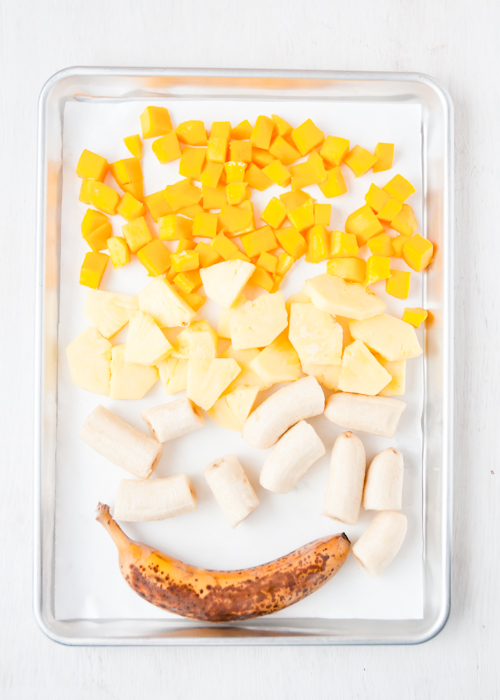
Secret #3: Produce that does well sliced or diced:
Bell peppers, avocado, mango, pineapple, melon, peas, carrots, broccoli, cauliflower, stone fruits (peaches, nectarines, plums, cherries), apples (yes, you can freeze apples!), summer squash, and winter squash.
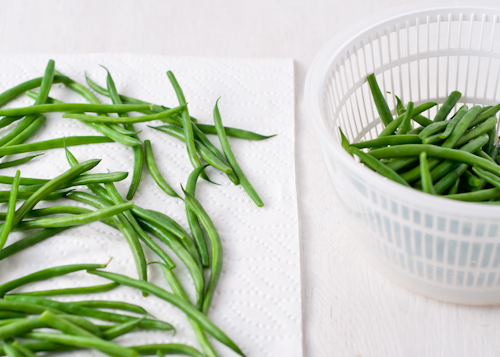
Cut broccoli and cauliflower into florets. Shell peas, trim the ends of green beans and asparagus. Dice or slice peeled carrots, squash, brussels sprouts, and large leaves of spinach, chard, and kale. Rhubarb should be trimmed of woody ends and diced.
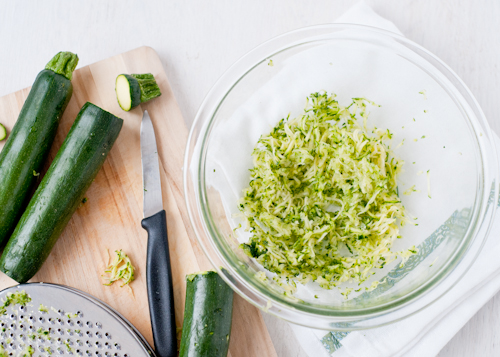
Potatoes can be frozen, but benefit from being shredded. Think: hashbrowns. (Note: I personally don’t like freezing potatoes at home. The quality just isn’t as good.) Zucchini is another veggie with a high water content. It can be sliced or diced and frozen, but I prefer shredding it instead.
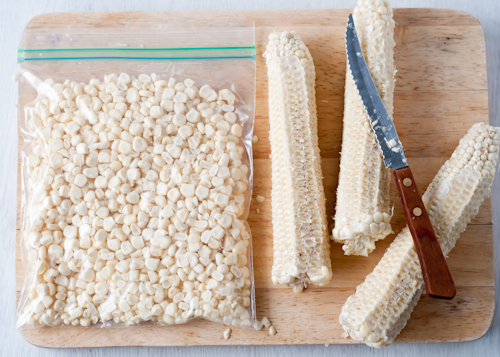
Corn and bananas are pretty versatile when it comes to freezing. Corn can be frozen whole or cut from the cob. It’s totally up to you! I think it’s one of the best veggies for freezing because the quality isn’t as affected by the cold temperatures.
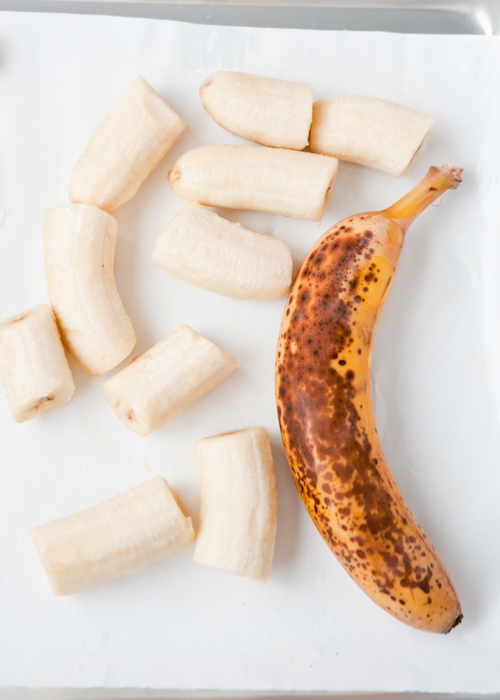
Bananas can be frozen whole and unpeeled, or peeled and whole, or peeled and cut. They’re pretty fabulous that way! I can’t resist adding a frozen banana to my daily smoothie to sweeten it up without adding sugar.
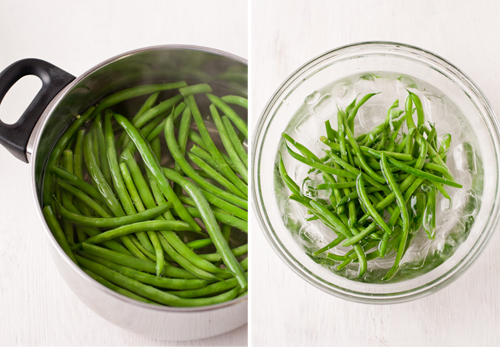
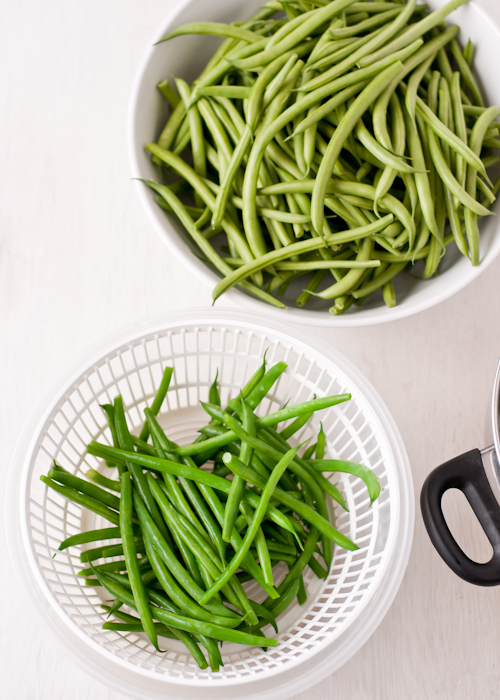
After fruits and veggies have been peeled, sliced and diced, as needed, there are a few more preparation steps.
Secret #4: Most vegetables also need to be blanched before freezing. Blanching is nothing more than plunging vegetables into a pot of boiling water, letting them cook briefly (3-4 minutes max), and transferring them to a big bowl of ice water to stop the cooking.
Why is this important? Remember that mushiness I mentioned earlier? This will help with that, but it also helps maintain the color and nutrients, as well as killing any surface organisms that could lead to spoilage.
Corn (though you could), tomatoes, onions, potatoes (including sweet), and winter squash don’t need to be blanched. And neither do fruits.
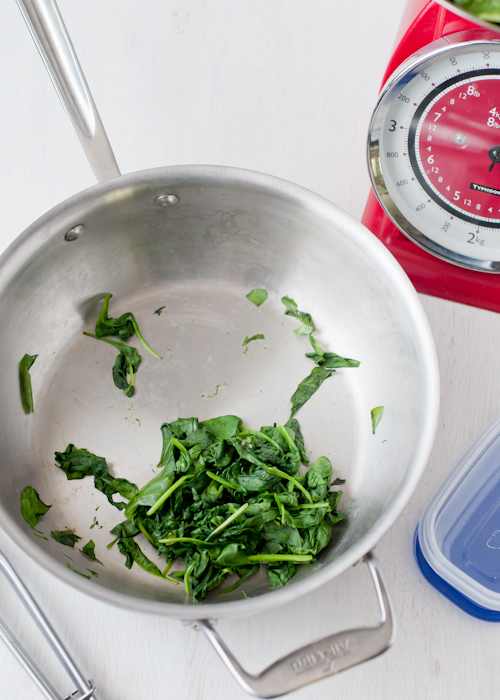
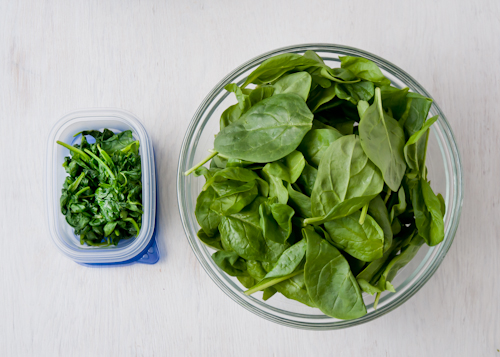
Leafy greens don’t have to be cooked, but they can be. But one thing is for sure, quickly sauteing spinach, for instance, really saves on space! Pictured above is four ounces of spinach cooked and fresh.
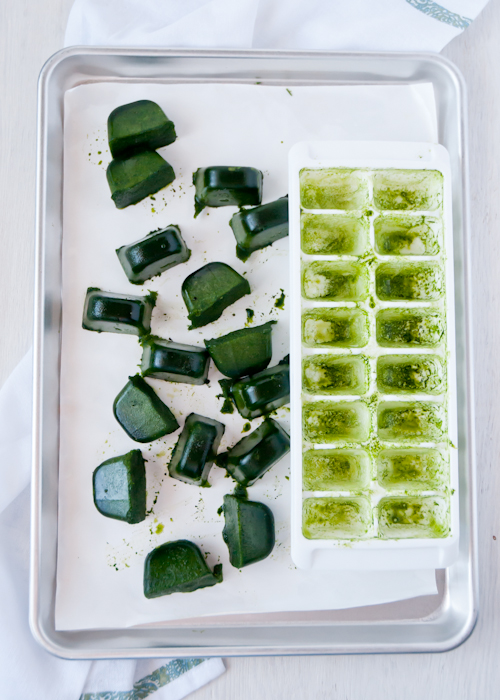
Something I saw a few months ago (and a few of you lovely readers mentioned to me) that I think is brilliant, is making spinach ice cubes to add to smoothies. I usually just put the greens into my smoothie packs, but I finally tried this and I’m hooked! Simply add a whole bunch of leafy greens to a blender with enough water to make a smooth puree and freeze. Easy peasy!
I also like to roast some foods before I freeze them. I’ve done this with tomatillos, plums, tomatoes, and peppers. I will either puree them into a sauce or freeze them as is, juices and all.
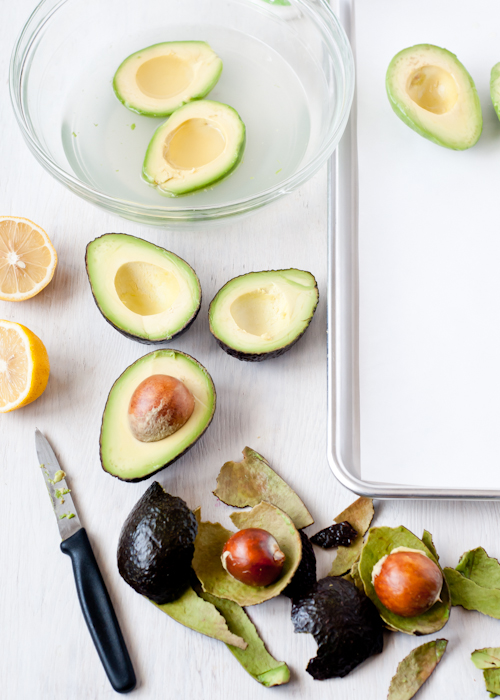
Secret #5: In canning, foods are treated with citric acid, lemon juice, or ascorbic acid to help kill microorganisms and prevent discoloration. The same rings true with freezing. Think of all of your favorite fruits that turn brown after being cut — bananas, avocado, peaches and nectarines, apples, etc. They benefit from a quick dip into acidulated water.

Make a solution of 1/2 teaspoon ascorbic acid (found in the pharmacy or canning section of grocery stores) per 3 Tablespoons of water, or 1 Tablespoon fresh lemon juice in 4 cups (1 quart) water. Sprinkle or dip the fruit with the solution and let dry.
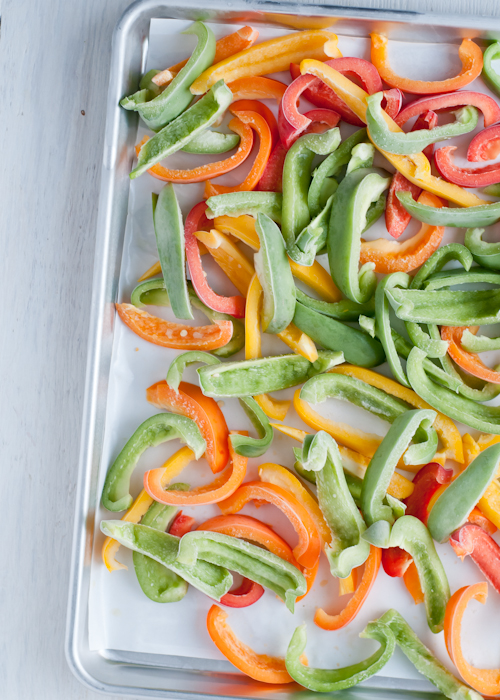
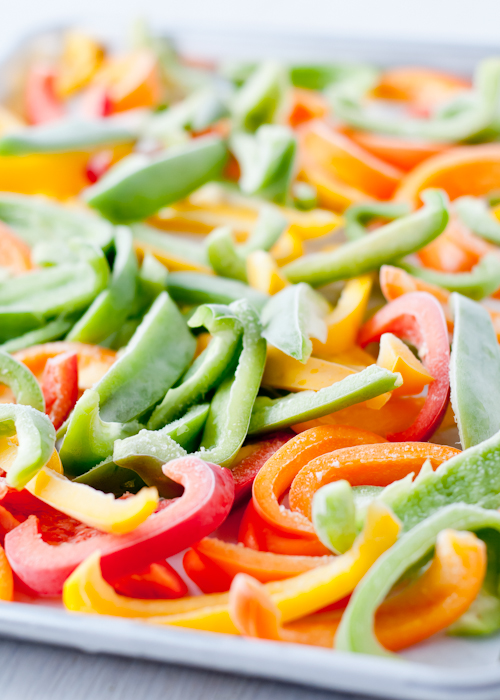
How to Freeze Produce
First up, Dry Pack freezing, where we start by talking about IQF, or Individually Quick Frozen. The idea behind this is simple: if a fruit/veggie is frozen in a single layer (whole or sliced), it will freeze more quickly. Secret #6: Freezing quickly is great because a) fruits and veggies are easy to thaw out if they aren’t frozen together in a big lump, and b) the quality is better after thawing.
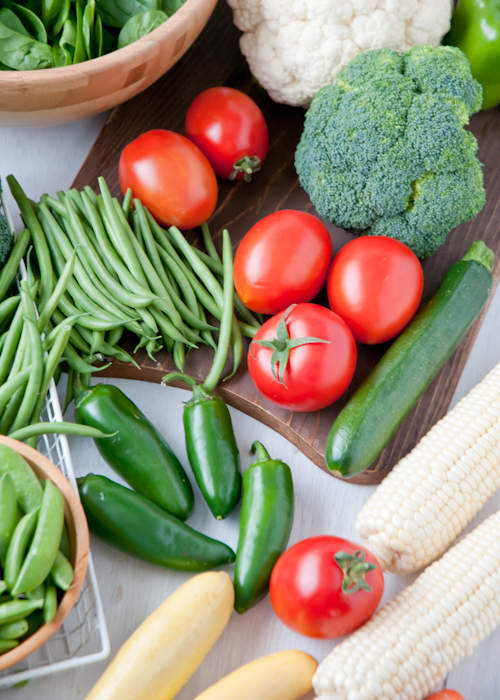

All you do is place everything you want to freeze in a single layer on a lined baking sheet. Lined, so that what you’re freezing doesn’t stick to the pan.
The goal is to freeze the food as quickly as possible. Adjusting the temperature of the freezer ahead of time is a good idea. You want to ensure that it’s as cold as possible — at least 0 degrees F or lower. You also want to make sure there is plenty of air circulation for even freezing, so it’s better not to layer a bunch of bags or containers in the freezer at once. Doing it over the course of a day or a few days is a good idea.
Be sure to not open the freezer as the produce is freezing on the baking sheets. You really want them to freeze as quickly as possible without fluctuating temperatures. When the food is frozen, transfer to containers or bags and place the bags back in the freezer.
Removing air from containers and bags will help keep frozen food last that much longer and help prevent hoar frost from forming.

Secret #7: Another option is Wet Pack freezing, or freezing fruit in a sugar syrup. The recipe for the syrup is the same as you’d use when canning. All of the steps are the same as with canning, except no cooking needed. It’s so easy to do!
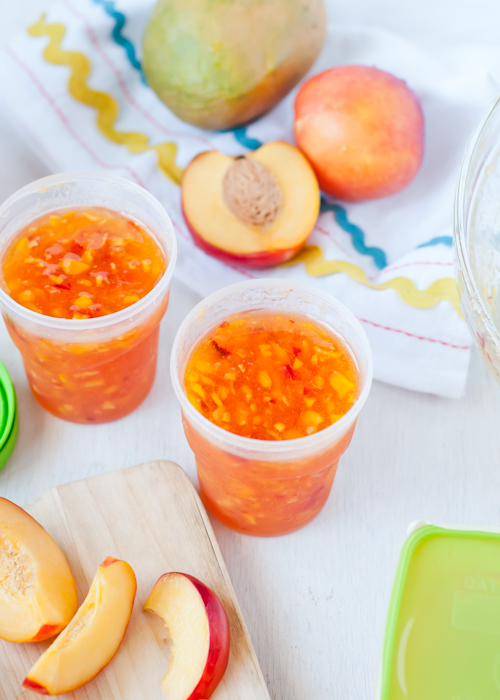
Of course I can’t talk about freezing produce without talking about freezer jam. In the winter months, it’s really wonderful to pull out a jar or container of freezer jam made from summer fruit. We really enjoy making jam at our house and it is another great way to enjoy frozen fruit.
I also freeze fruit and vegetable purees (including baby food when my kids were tiny), soups, sauces and other condiments, like fresh salsa.
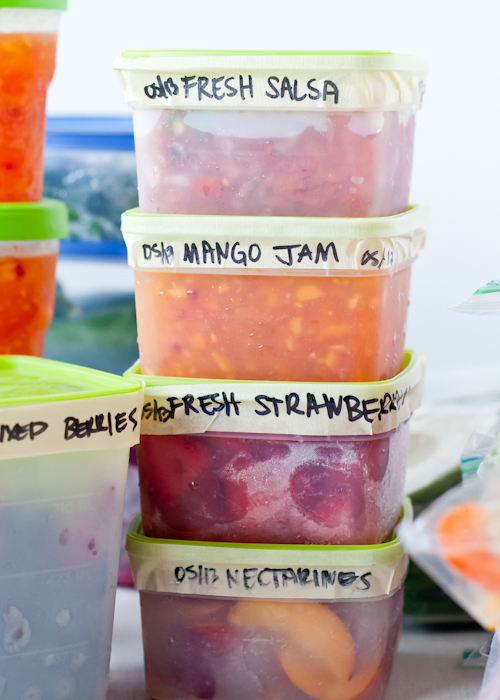
How to Label & Store Frozen Produce
Secret #8: You’ll want to label the bags and containers with the date and the contents. You might think you’ll remember what it is, but six months down the road it might be more difficult to remember what was in each bag or container.
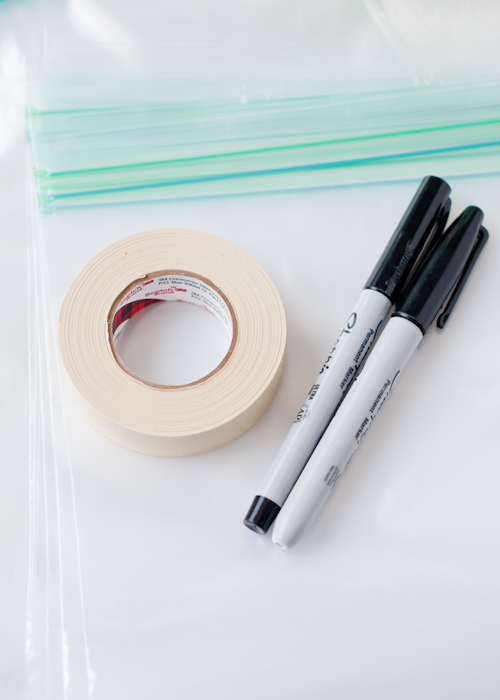
Freezer tape will stay on the containers despite the cold temperature and the moisture. I like to run tape around the containers too, to keep out air and prevent hoar frost. Wrapping bags and containers in foil and taping will also help with that.
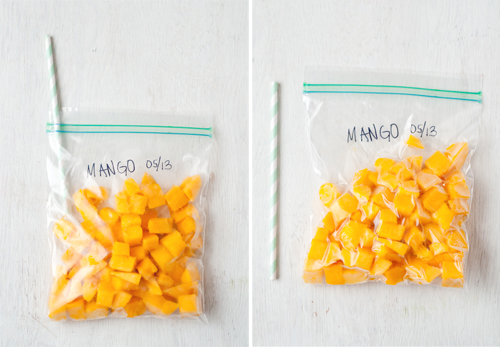
I like to use resealable freezer bags a lot when I freeze produce. They’re easy and inexpensive. Secret #9: Both bags and containers should be packed full. Remove as much air as possible. A trick I learned is to use a straw to suck all of the air from the bag and then quickly close it.
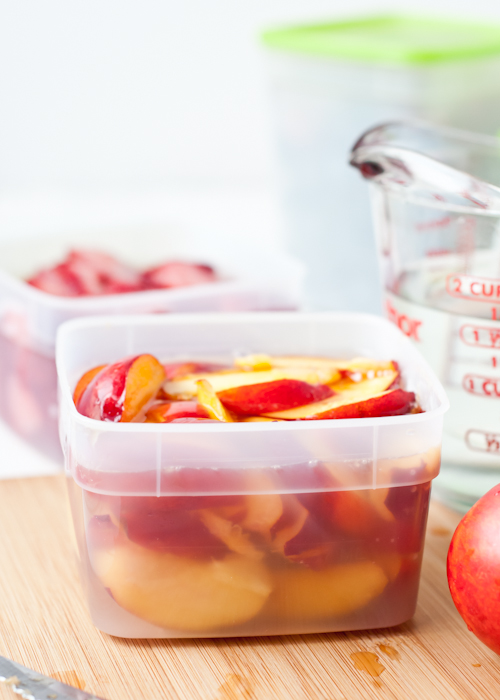
For containers, removing air is a bit challenge without the help of a vacuum device. A vacuum sealer is definitely the way to go for long-term storage — both for bags and containers. It is worth the extra expense to purchase a device if you do a lot of freezing. Removing the extra air and sealing fruit and veggies individually in plastic packaging yields a lot better results than the freezer bags alone. (My grandma swears by it!)
Secret #10: When using containers, be sure to leave enough headspace to allow for the liquids to expand as it freezes.
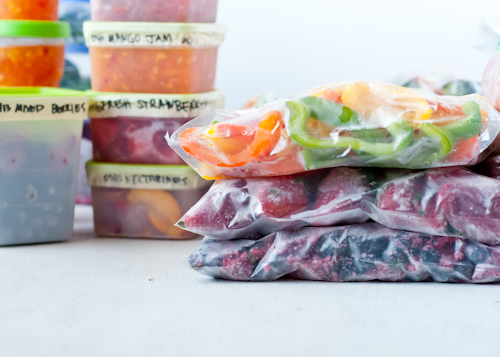
Storage Time & Thawing Instructions for Frozen Fruits & Vegetables
Typically in a basic freezer, frozen fruits and veggies will last a very long time. As time passes, the food doesn’t become inedible, but the quality does deteriorate. If you plan on keeping frozen foods for a long time, a deep freeze might be a better bet as it has lower temperatures and is opened less often.
Secret #11: Fruit will keep well for a year, and veggies will keep for about 18 months. (I’ve had some keep for much, much longer.)
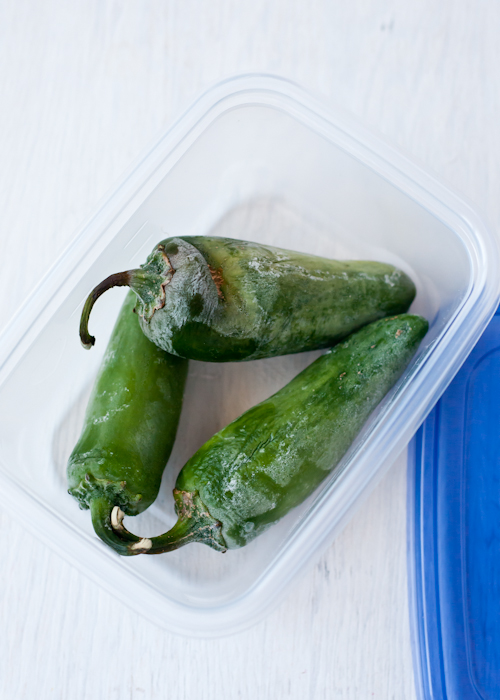
When thawing, know that fruits are better eaten when still a little frozen so they aren’t completely mushy. Or you can cook them into sauces, or add them to smoothies. Vegetables are best cooked straight from the freezer, no thawing.
Some vegetables suffer no ill effects from freezing — corn and peas, particularly. Others will be better in recipes where they will break down and be consumed in smaller pieces, like soups, stews and sauces. There’s nothing easier than pulling a bag of broccoli, carrots and cauliflower straight out of the freezer and toss them right into a Thai curry.
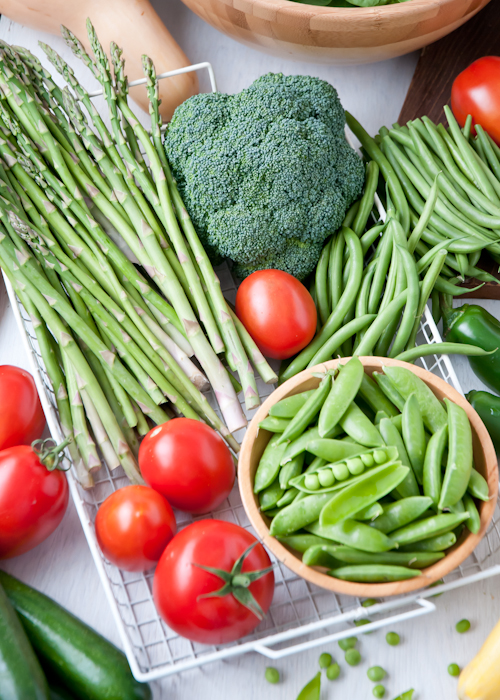
Well there we have it. Everything you need to know about freezing fruits and vegetables for smoothies, and getting your summer harvest stocked away for the winter, .
What about you? Does all this talk about freezing fruits and veggies take you right back to summers at your grandma’s house? Do you prefer canning? Any tips or secrets you’ve learned along the way? Oh. And for those who’ve asked, here’s our favorite blender. I’d love to know!
P.S. — Favorite kitchen tools.
Don’t have time right now to start freezing produce? Pin this for later:
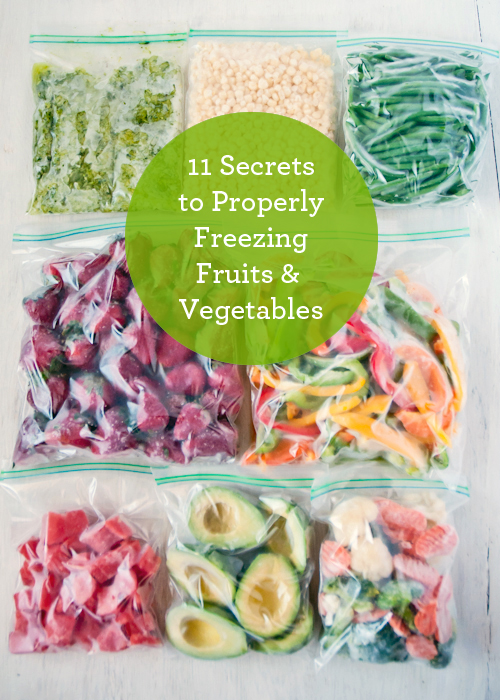
Created by Lindsey Rose Johnson for Design Mom.
The post Freezing Produce for Smoothies: 11 Tips & Secrets appeared first on Design Mom.
